This Iranian-Canadian food stylist is raising awareness with these stunning dishes
In her most recent work, Armita Hosseini has turned her attention to the uprising in her home country of Iran, using food as a vehicle for awareness as part of #CookForIran
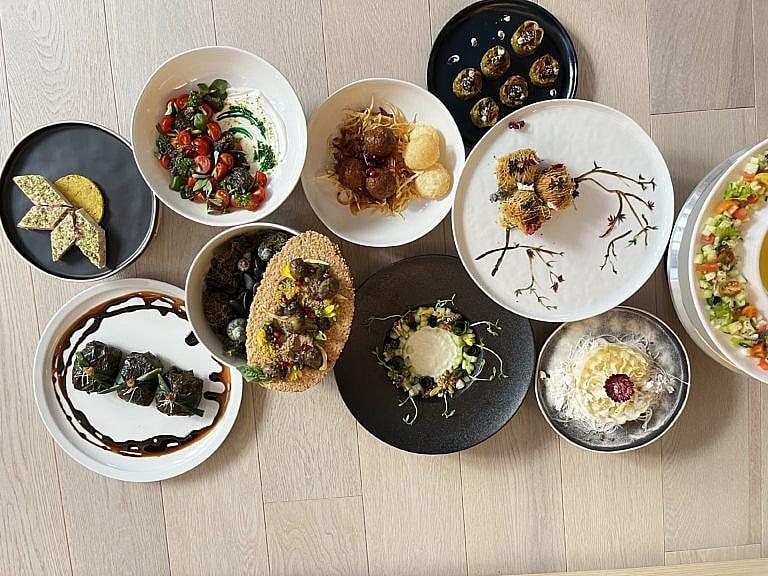
Each plate represents a different Iranian province in this journey through a culinary landscape (Photos courtesy Hosseini)
Share
Armita Hosseini was 11 years old when she immigrated with her family from Tehran to the Greater Toronto Area. “We lived a very comfortable upper-middle-class life in Tehran, but my parents gave that up,” she says. “They knew my opportunities would be limited there because I’m a woman.”
Hosseini, a registered psychological associate, spends her off hours styling plates of food on Instagram. Since Iran’s civil uprising, Hosseini has been posting her support for protesters on social media. Until recently, she would regularly visit Iran to see her extended family and explore its regional food culture. Now, like many Iranians living abroad, she fears for her life and safety if she were to go back. More than 448 people have been killed in the uprising so far, including 29 women and 60 children; 15,000 have been detained and face horrors like torture, rape and potential execution in the course of their incarceration.
“After the death of Mahsa Amini and reading the news about my people getting murdered by the state, I felt helpless watching from the sidelines,” she says. But in October, she came across #CookforIran, a volunteer-led movement in which social media users cook and share Iranian recipes to amplify the plight of protesters. “That’s what got me sketching plate designs again,” she says.
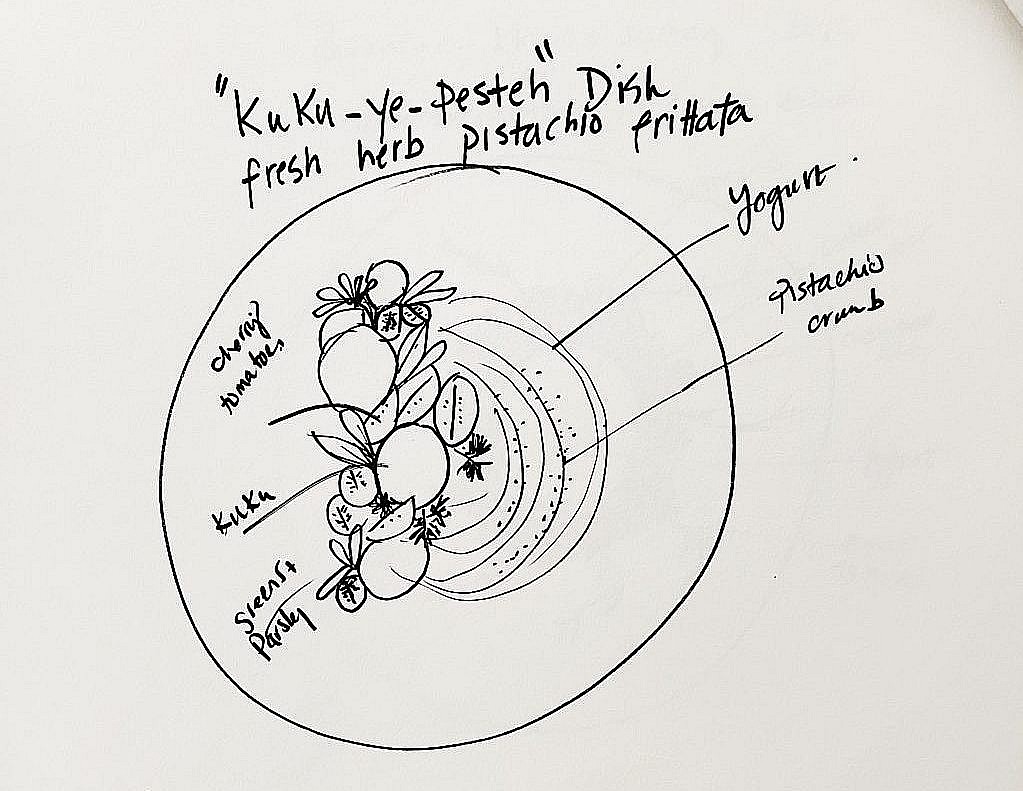
Food styling started as a pandemic hobby. Hosseini has long had a flair for cooking and design, but it turned into a solid side hustle as photos of her intricately plated dishes attracted nearly 10,000 followers on Instagram. Her work is not just about pretty designs: from the start, she’s tied it to meaningful causes. In one past project, “Baking for Beirut”—conceived after an explosion rocked Lebanon’s capital in 2020—she sold namoura, a syrup-soaked semolina cake, to her Instagram followers and raised more than $3,000 for the Lebanese Red Cross.
In her most recent work, the Toronto-based stylist has turned her attention to the uprising in her home country of Iran. The idea is to use food as a vehicle for awareness—not only for her people’s struggle for freedom, but for Iran’s diverse culinary heritage and the enduring roles of food and joy in its culture, even amid heartbreaking conflict.
Her piece features 10 dishes from some of Iran’s most populous provinces. The choice to feature dishes from across the country’s culinary landscape was deliberate. “One way the Iranian regime sows division within the population is by producing propaganda that emphasizes the lines between provinces,” she says. “But with the revolution, for the first time in a long time, people are united no matter where they’re from. That connection is what’s keeping this movement going, and food is an important part of that thread.”
 Borani-e-khiar o sumaq (cucumber, sumac and yogurt salad), representing Kurdistan province
Borani-e-khiar o sumaq (cucumber, sumac and yogurt salad), representing Kurdistan province
Kurdish tribes in this province have been the focus of crackdowns by the Islamic regime during the revolution; Mahsa Amini herself was Kurdish. This deconstructed version of the salad features finely chopped lettuce, cucumber, sprouts and edible flowers in a ring around a pool of homemade yogurt topped with sumac and salt.
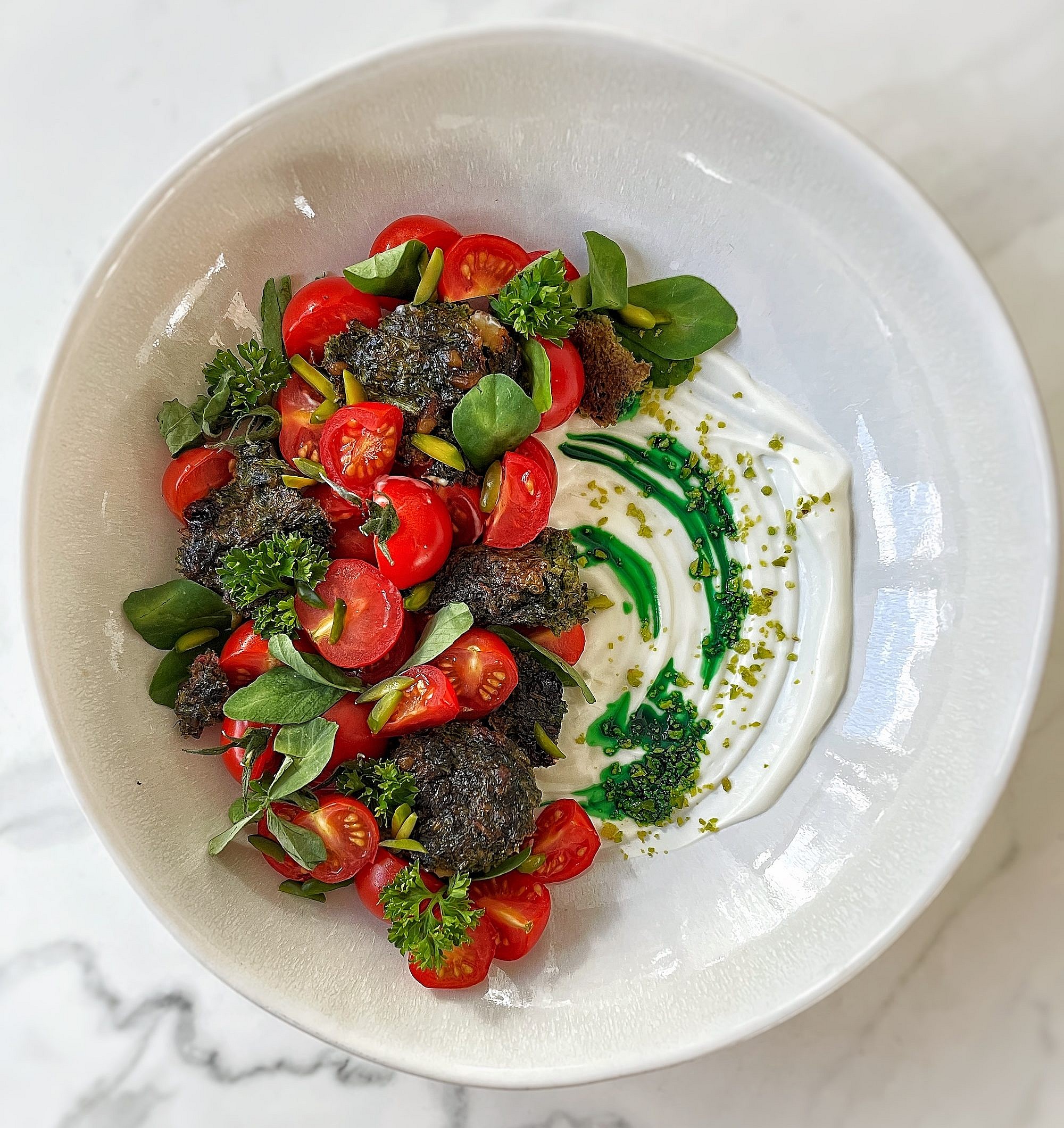 Kuku-ye-pesteh (fresh herb pistachio frittata), representing Kerman province
Kuku-ye-pesteh (fresh herb pistachio frittata), representing Kerman province
Iran is the world’s largest exporter of pistachios, and Kerman is known for its verdant green pistachio fields. This frittata, filled with fresh herbs like parsley, is a popular dish in the region. Hosseini adds tomatoes, pickles and chopped pistachios and serves it with yogurt on the side.
 Kufteye-ye-somagh-e-araki (walnut sumac meatballs), representing Arak, a city in Markazi province
Kufteye-ye-somagh-e-araki (walnut sumac meatballs), representing Arak, a city in Markazi province
Iranian celebrity chef Mehrshad Shahidi, often described as Iran’s Jamie Oliver, was beaten to death in Arak by security forces during an anti-hijab protest on October 31. Hosseini honours Shahidi’s culinary roots with these meatballs made with fresh tarragon, parsley, cilantro and walnuts, served on fried onions with puffed bread. “This dish brings back nostalgic memories of my grandfather’s farm in Arak, where I spent time running between haystacks and wheat fields,” she says. “The fried onions look like hay to me.”
 Salad-e-Shirazi (Shirazi salad), representing Shiraz, a city in Fars province
Salad-e-Shirazi (Shirazi salad), representing Shiraz, a city in Fars province
Shiraz, a vibrant cultural centre known for its wine, gardens, and artists, is home to Hafez, one of Iran’s greatest poets. It’s also a major protest site. This salad of cucumber, tomato, onion, verjuice, olive oil and mint is a go-to for many Iranians. Hosseini designed it to evoke the brightness and liveliness of Shiraz.
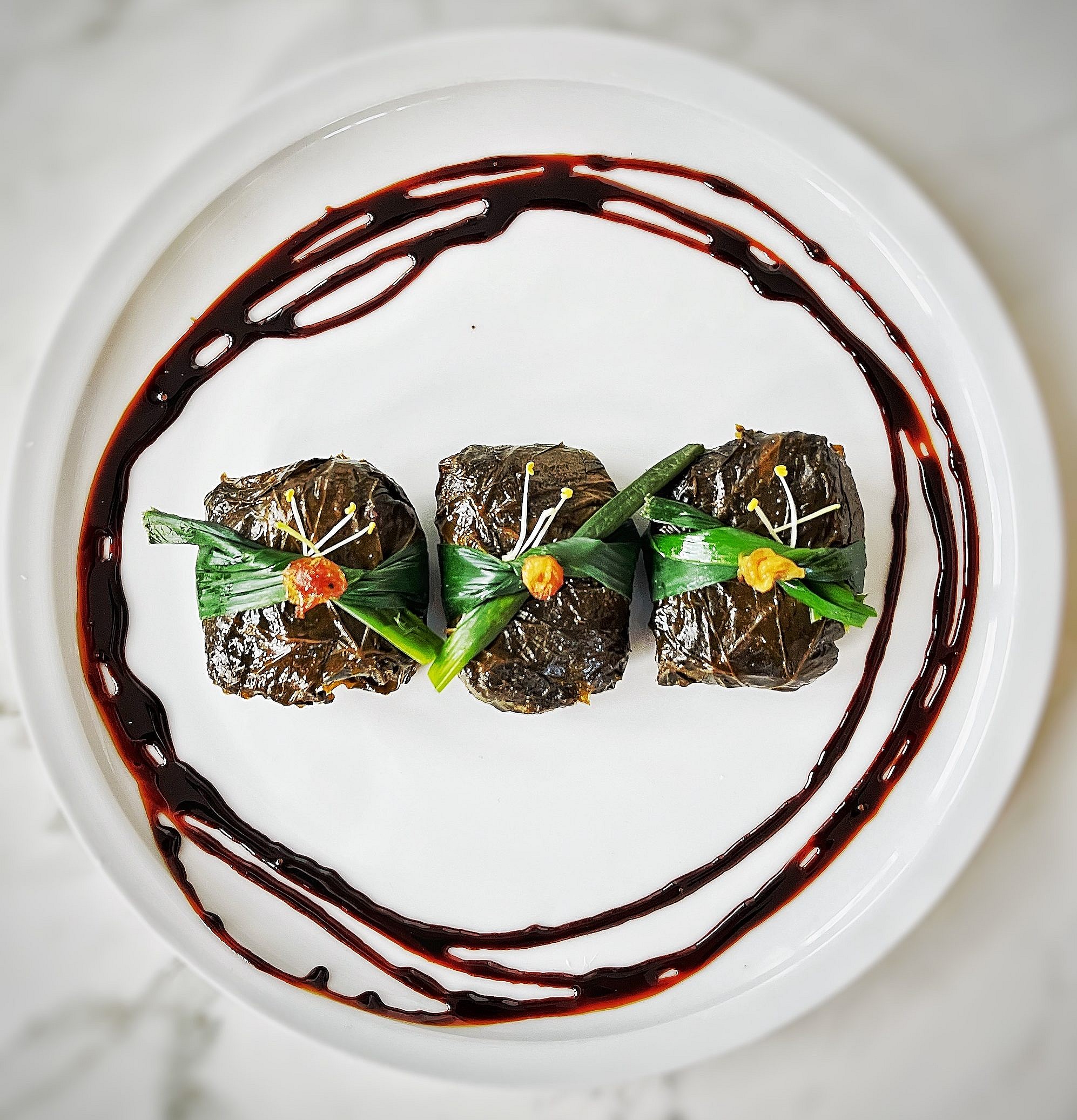 Dolmeh-ye-tabrizi (stuffed grape leaves) representing Tabriz, a city in East Azerbaijan province
Dolmeh-ye-tabrizi (stuffed grape leaves) representing Tabriz, a city in East Azerbaijan province
This dish has Turkish roots, and is a staple in several Iranian provinces. Hosseini fills tidy parcels of grape leaves with beef, rice, fresh herbs, raisins and lentils, wraps them in leek, and draws circles of pomegranate molasses around them. “This dish just brings you joy and makes you happy, like a gift, so I wrapped it like one.”
 Baklava, also representing Tabriz
Baklava, also representing Tabriz
Here, Hosseini reimagines baklava as a bird’s nest on a delicate tree painted in pomegranate molasses. “Some of Iran’s most delicious and sophisticated cooking is from this region,” Hosseini says. “Influenced by the history of the Safavids and Ottomans, this Turkish-speaking city is one of the largest cities in the country.”
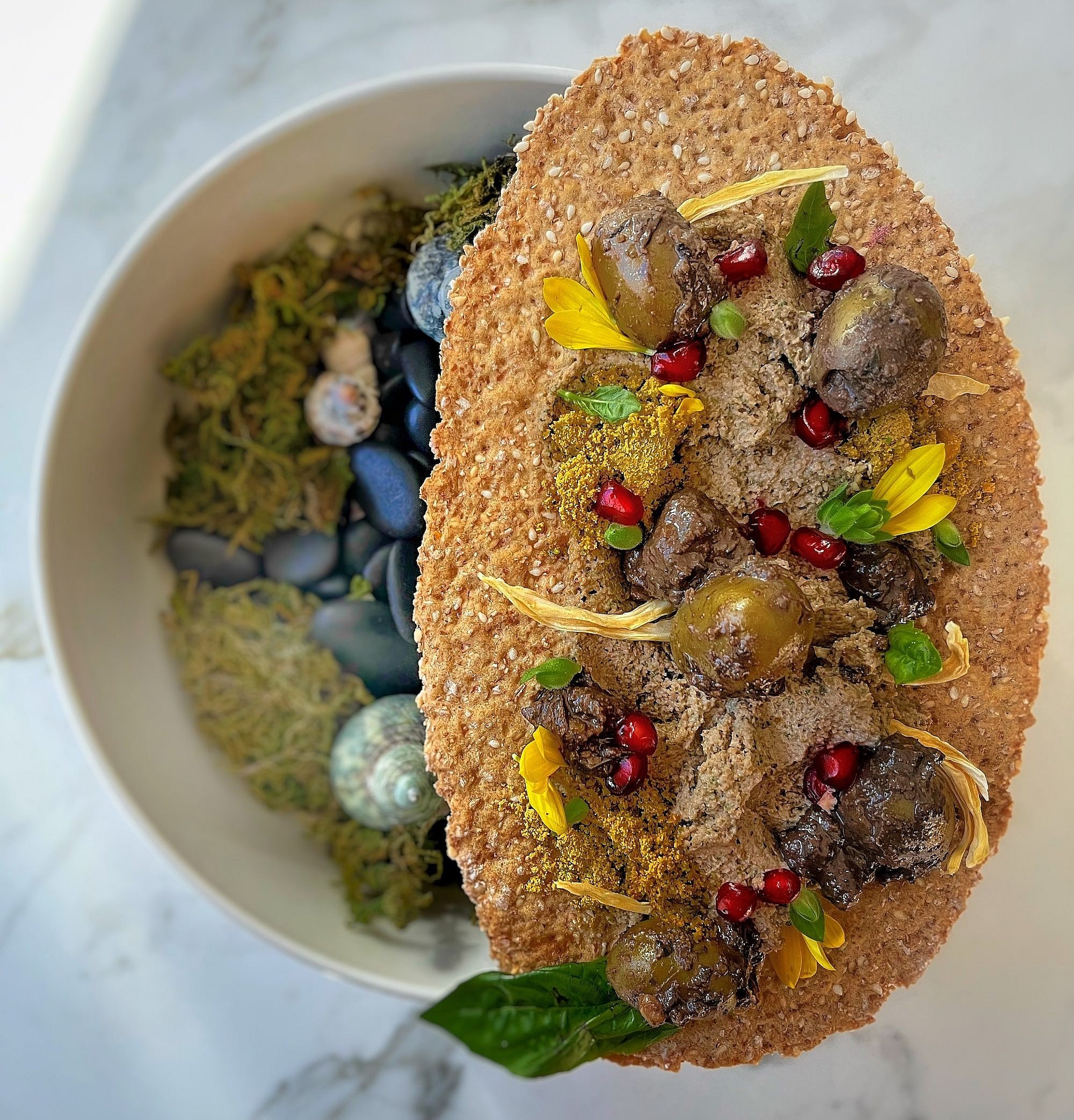 Zeytoon parvardeh (olive tapenade) representing the Caspian region.
Zeytoon parvardeh (olive tapenade) representing the Caspian region.
“In the north, there are green olives everywhere,” Hosseini says. “In between the mountains, with its mild Mediterranean climate, this evergreen region is close to the Caspian Sea. Its recipe are often tangy and sour.” This tapenade is made of olives, walnuts, pomegranate molasses and lime juice.
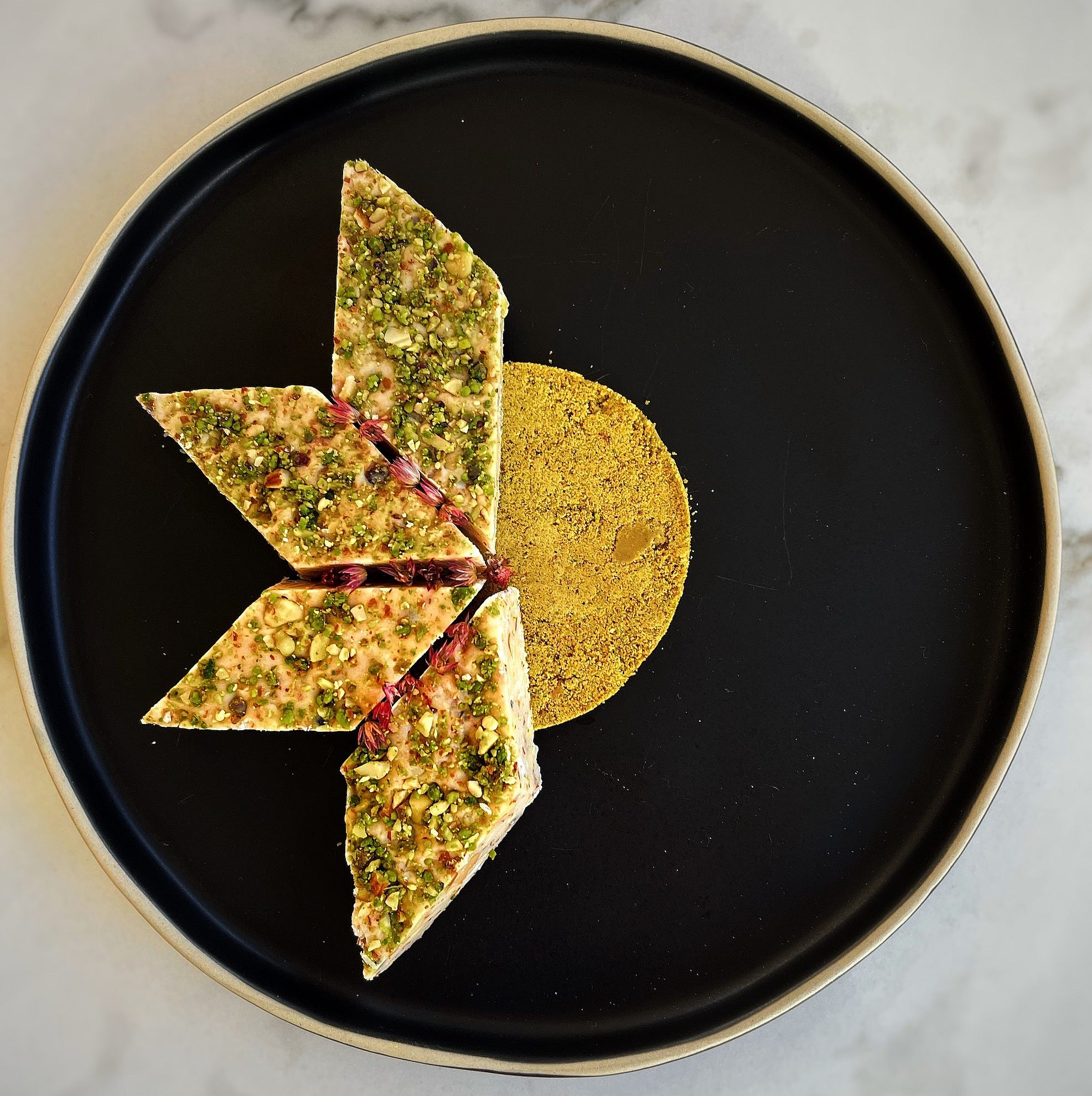 Pistachio and cardamom halva
Pistachio and cardamom halva
Halva is a common dessert throughout Iran, with variations in each region. The theme of this geometric plate is symmetry, representing unity between Iranian provinces.
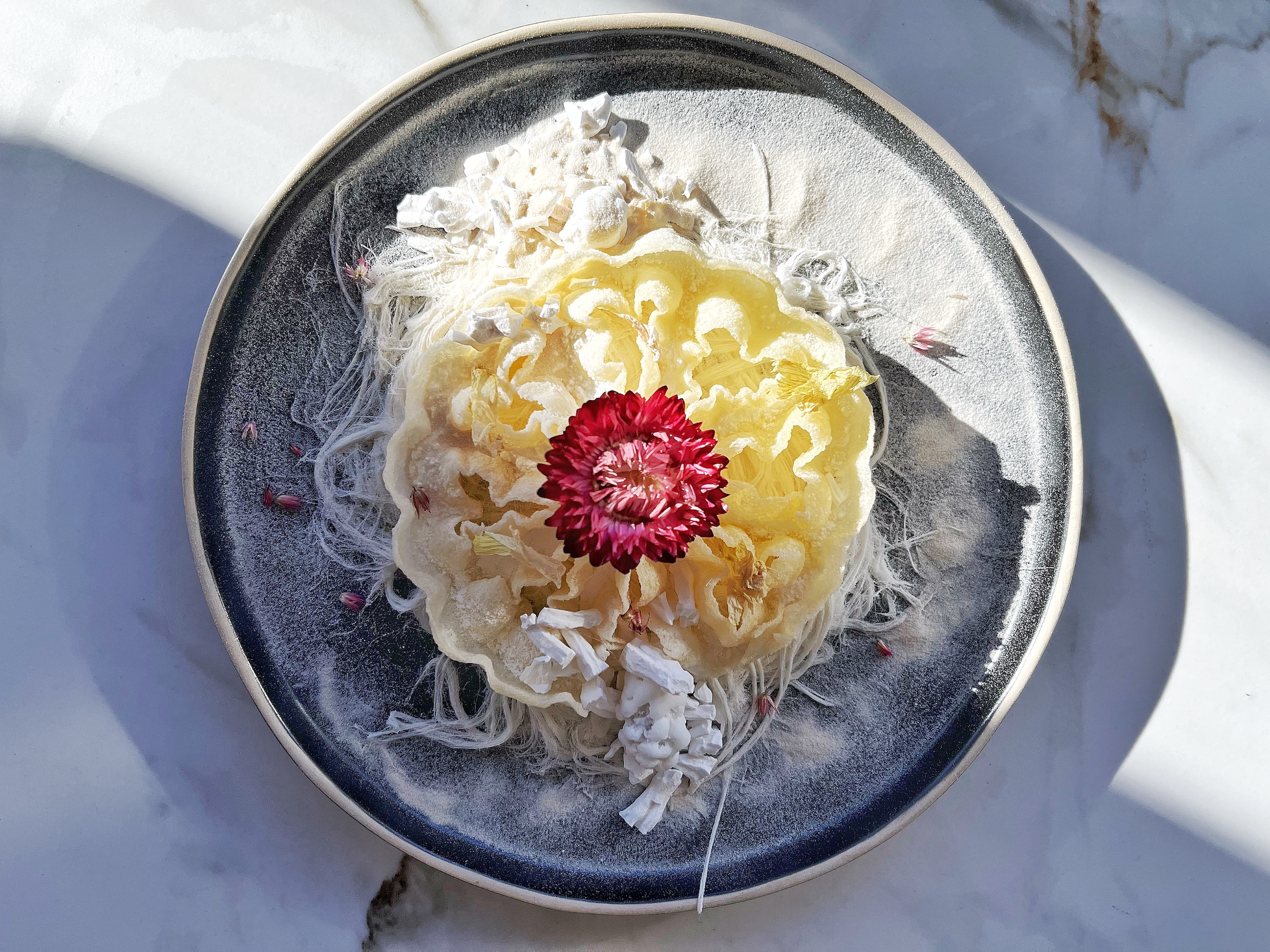 Pashmak (cotton candy) representing Yazd province
Pashmak (cotton candy) representing Yazd province
A favourite childhood treat, Iranian cotton candy comes in flavours like sesame, cardamom, orange blossom and rose water. It’s often served with cake or other desserts, as in this winter wonderland design with a rosette pastry and edible flower on top. Yazd, Iran’s centre of Zoroastrian culture and religion, is known for its sweets.
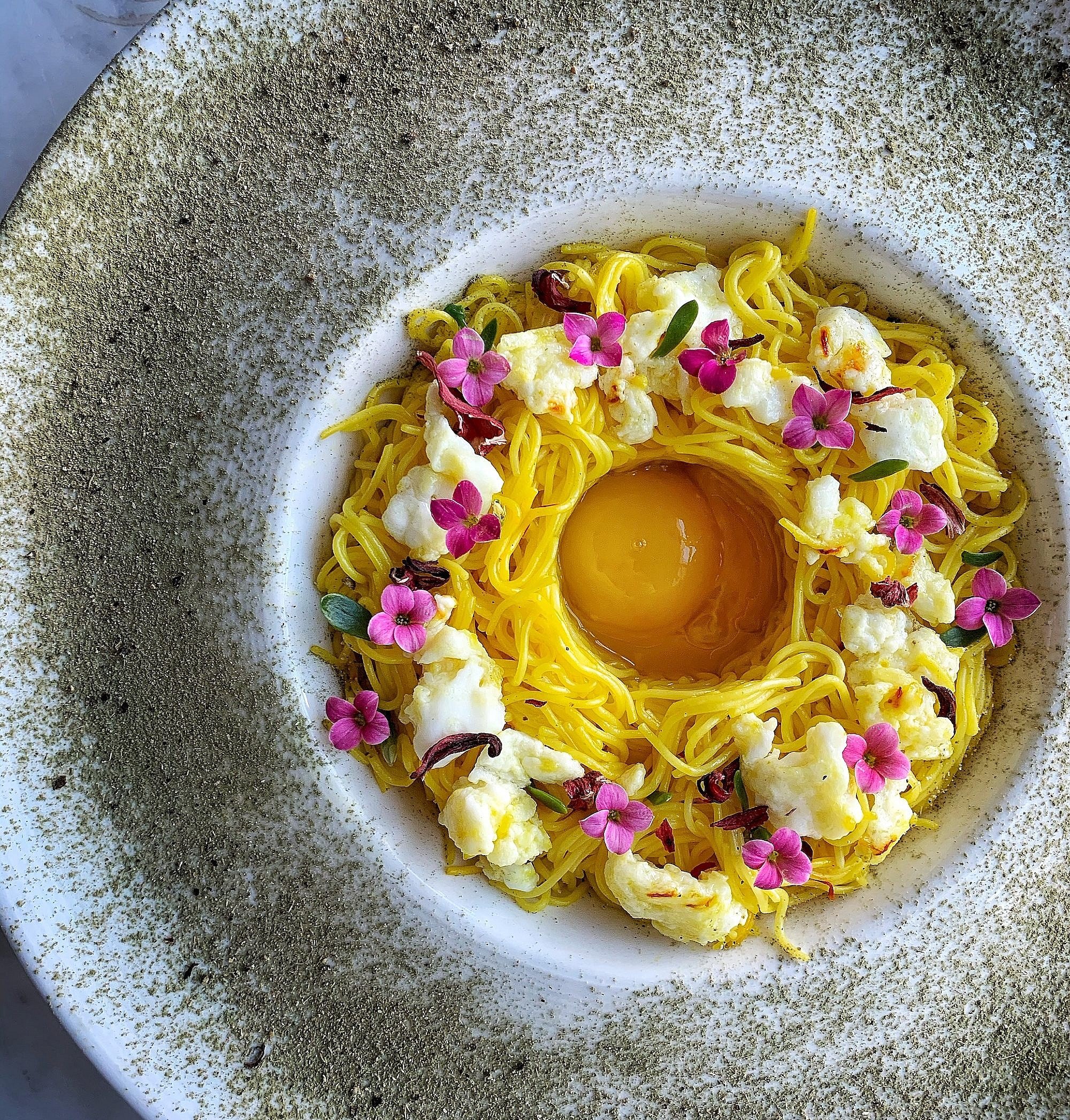 Ballalat (angel hair noodles, eggs with saffron and cardamom) representing Bandar Abbas, a city in Hormozgan province
Ballalat (angel hair noodles, eggs with saffron and cardamom) representing Bandar Abbas, a city in Hormozgan province
This sweet, colourful breakfast dish of angel hair with egg and saffron, reflects the flavours of cuisine in this region by the Persian Gulf. Bandar Abbas is a port city with an Iranian navy base. In the third month of Iran’s civil uprising, industrial, gas and oil workers went on strike in this region to support the movement.
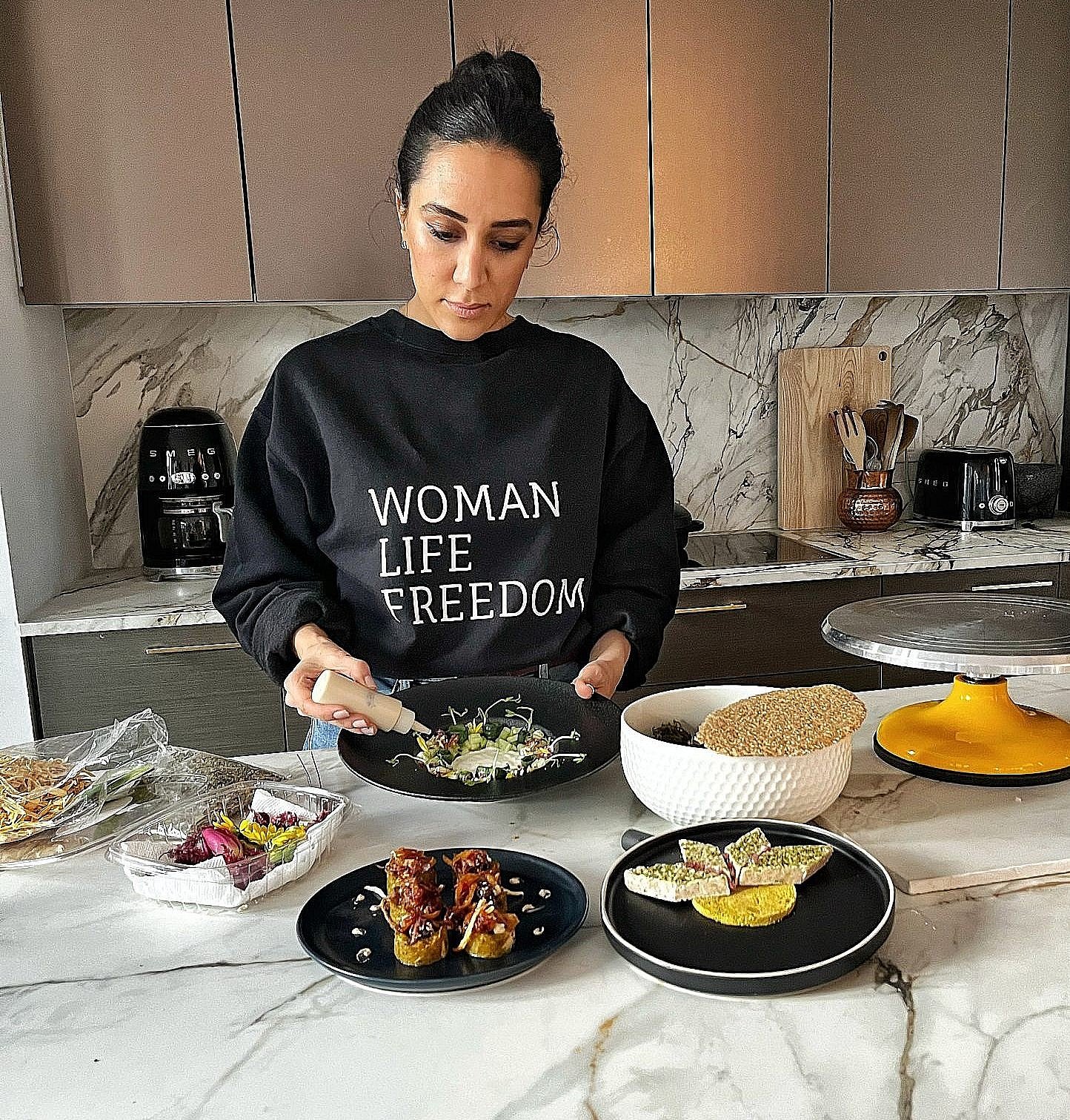
To check out more of her work, follow Armita Hosseini on Instagram (@cookingwitharmita).